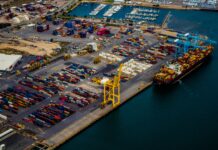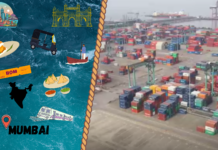
Hapag-Lloyd has signed an agreement with the cargo inspection and transportation software company NCB Group to adopt its cargo screening tool for the detection of misdeclared and undeclared dangerous goods in containerised shipments.
The software-as-a-service solution namely Hazcheck Detect has been developed and will be provided by NCB’s software division, Exis Technologies, offering information technology (IT) solutions for the management of dangerous goods in sea transport.
More specifically, the application programming interface (API) based, integrated solution scans all cargo booking details for keywords and includes an industry library to enable suspicious bookings to be identified that may be misdeclared or undeclared dangerous goods (DG) and other compliance cargo.
The service allows non-compliant cargo to be detected within seconds rather than days. Last-minute changes to bookings, declarations, bills of lading and shipping instructions can be picked up in real time, helping to prevent dangerous cargo from being loaded onto a ship, and thereby avoiding the risk of fires at sea.
Hapag-Lloyd has been a customer of NCB and Exis Technologies’ Hazcheck Systems for many years, using the Hazcheck IMDG Code validation tools for declared dangerous goods cargo in their booking processes.
“Working with container lines like Hapag-Lloyd will help us to further develop the tool using machine learning and AI techniques to enhance the screening processes as part of our not for profit mission, Safety of Life and Cargo at Sea,” stated Ian Lennard, NCB president.
“Data across our Hazcheck tools will help us enhance the screening process using validation results and feedback from container inspections, helping with safety throughout the whole dangerous goods shipping process,” added Lennard.





